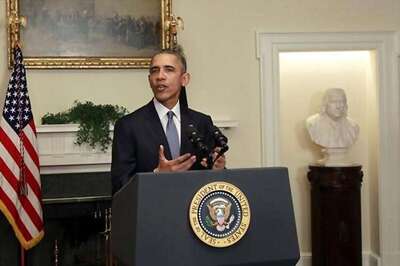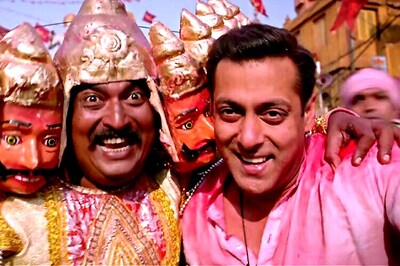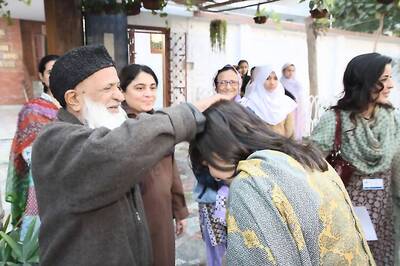
views
Prime Minister Narendra Modi will lay the foundation stone for the World Health Organization’s Global Centre for Traditional Medicine in Jamnagar on April 19, as part of his three-day visit to Gujarat, which began on April 18, according to reports.
The event comes on the heels of the Ministry of Ayush and the Gujarat government’s curtain-raiser press conference on April 18 to discuss important developments in the field of traditional medicine in India.
These are the launch of the WHO Global Centre for Traditional Medicine (GCTM) and the convening of the Global Ayush Investment and Innovation Summit (GAIIS).
According to the official announcement by the Ministry of Ayush, along with Modi, Prime Minister of Mauritius Pravind Jugnauth and the Director-General of WHO, Dr Tedros Ghebreyesus, will also attend the two events in Gujarat.
Global Centre for Traditional Medicine
On March 25, the WHO announced that the global health agency and the Centre have signed an agreement to establish GCTM.
According to WHO, this global knowledge centre for traditional medicine, supported by a $250 million investment from the central government, aims to harness the potential of traditional medicine from around the world through modern science and technology to improve people and the planet’s health.
Ghebreyesus said: “Ensuring all people have access to safe and effective treatment is an essential part of WHO’s mission, and this new facility will help to harness the power of science to strengthen the evidence base for traditional medicine. I’m grateful to the Government of India for its support, and we look forward to making it a success.”
Regarding the establishment of GCTM, Modi had said on March 25: “It is heartening to learn about the signing of the Host Country Agreement for the establishment of Global Centre for Traditional Medicine (GCTM).”
“The agreement between the Ministry of Ayush and WHO to establish the WHO-GCTM at Jamnagar, Gujarat, is a commendable initiative,” he had said.
He also noted that the government has worked through various initiatives to make preventive and curative healthcare affordable and accessible to all. Now, he hopes that the global centre in Jamnagar would contribute to the world’s best healthcare solutions.
Key Facts
• GCTM will be the first of its kind in the world and it will be inaugurated on April 19
• The government’s goal is to harness the power of traditional medicine by combining it with technological advancements and evidence-based research
• Even though Gujrat’s Jamnagar will be serving as the headquarter, GCTM aims to engage and benefit the entire world
• The medical facility will be to maximise traditional medicine’s contribution to global health
• GCTM will focus on four main strategic areas which are evidence and learning, data and analytics, sustainability and equity, as well as innovation and technology
• It will focus on developing a solid evidence base for policies and standards on traditional medicine practices and products, as well as assisting countries in integrating it as appropriate into their health systems and regulating its quality and safety for maximum and long-term impact
Traditional medicine
Traditional medicine is believed to be used by around 80% of the world’s population. To date, 170 of the 194 WHO member states have reported using traditional medicine, and their governments have requested WHO’s assistance in developing a body of reliable evidence and data on traditional medicine practices and products.
Traditional medicine refers to the sum of indigenous and various cultures’ knowledge, skills, and practices for maintaining health and preventing, diagnosing, and treating physical and mental illness over time. Its scope includes both traditional and modern medicine, including acupuncture, ayurvedic medicine, and herbal mixes.
It is noteworthy that natural compounds account for 40% of all licensed pharmaceutical drugs in use today, underscoring the critical importance of biodiversity and sustainability.
The creation of aspirin, for example, was based on traditional medicine formulations utilising willow tree bark. Similarly, the contraceptive pill was produced using the roots of wild yam plants, while child cancer treatments were based on the rosy periwinkle.
However, traditional medicine has undergone a significant transformation in terms of how it is examined. Artificial intelligence (AI) is now being utilised in traditional medicine to map evidence and trends, as well as to screen natural materials for pharmacokinetic features.
In some traditional medicine therapies, such as meditation and yoga, functional magnetic resonance imaging is utilised to analyse brain activity and the relaxation response, which are increasingly employed for mental health and wellbeing in stressful times.
Similarly, while the world has become more digital than ever before, mobile phone apps, online classes and other technologies have also helped to modernise traditional medicine.
Read all the Latest News India and Breaking News here




















Comments
0 comment